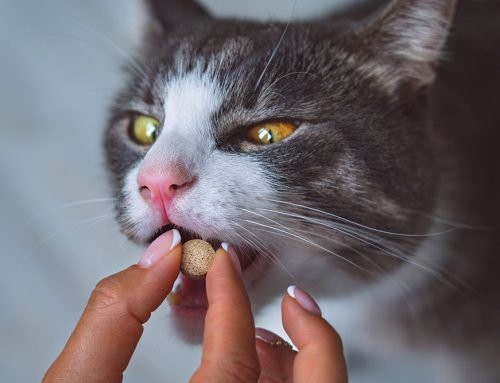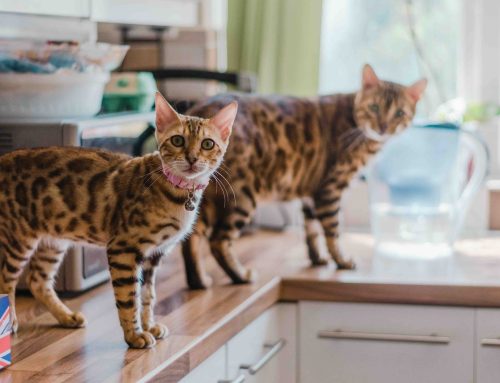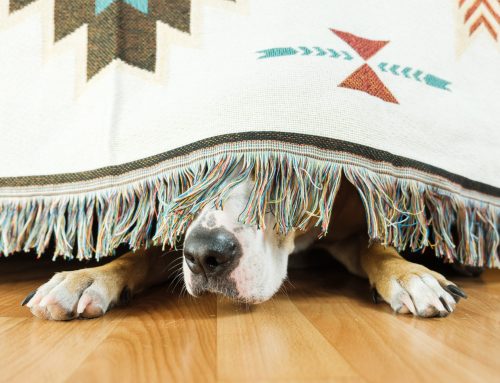As the California summer heats up, you likely cool down by taking a dip, relaxing in the shade, or sipping iced tea. But, what about your pet? With their year-round fur coat, your pet deserves special consideration during the summer, to prevent heat-related injuries and illnesses. We are here to help, with answers to your questions about heat-related problems, and how to prevent them.
Question: What heat-related problems can affect my pet?
Answer: The same way you can be worn out from overdoing it on a hot day, your pet can suffer from prolonged heat exposure, or excessive exercise in the heat. Common heat-related problems pets can experience include:
- Burned paw pads — Imagine walking across the blacktop on a hot, sunny day—barefoot. You wouldn’t make it far before turning back, and hopping to safety. Although your pet’s feet are covered with the thickest skin on their body, they are still susceptible to burning, if exposed to a hot surface. At Alisos Animal Hospital, we treat pets with burned paw pads every summer, because their owners simply don’t realize the danger for pets who are walked on hot pavement.
- Dehydration — You likely remind your toddler to drink fluids throughout the day, or your teenager after their soccer game, but what about your pup? Your energetic Lab may not stop to rehydrate while running at the dog park, or hiking with the family, and can become dehydrated and fatigued.
- Heat exhaustion — Heat exhaustion occurs when a pet is exposed to high temperatures or humidity, or does too much in the heat, and their body temperature rises. Common heat exhaustion signs include lethargy, excessive panting, drooling, vomiting, diarrhea, and incoordination. It is important to recognize heat exhaustion signs early, and quickly move your pet to a cool area, to prevent the progression to more serious heatstroke.
- Heatstroke — Heatstroke occurs when a pet’s internal body temperature rises high enough to cause internal organ damage, and possibly death. In addition to heat exhaustion signs, pets with heatstroke may have bright red gums, or convulsions, or may collapse. If your pet shows heatstroke signs, start cooling actions, using these guidelines, and take them to the nearest veterinary hospital immediately.
Q: Are some pets more likely to develop heat-related problems?
A: Any pet can develop heat-related problems, but some pets are at higher risk for heat exhaustion and heatstroke, including:
- Brachycephalic breeds, such as pugs, bulldogs, and Persian cats
- Pets with chronic illnesses, such as heart disease
- Pets with breathing problems, such as laryngeal paralysis and collapsing trachea
- Overweight pets
Brachycephalic pets, which have a shorter muzzle, are at highest risk of overheating. Dogs and cats eliminate excess heat mainly by panting, during which heat evaporates from exposed mucous membranes in the mouth and nasal passages. Since brachycephalic pets have only a fraction of the nasal cavity space of longer-nosed pets, their internal cooling mechanism is not as efficient, and they can overheat more readily.
Q: How can I prevent heat-related problems in my pet?
A: Keep your pet safe by planning ahead, and avoiding situations that will expose them to excess heat and humidity. Follow these summer safety tips to prevent a disastrous situation:

- Limit time outdoors — Let your pet out for short play sessions only on hot days, and supervise your pet if they will be out for more than a few minutes. If you have a doggy door that allows your pet to come and go as they please, consider locking it during the hottest part of the day, so your pet doesn’t overdo it running around the backyard, or fall asleep on the hot cement.
- Provide shade and water — Ensure your pet has a shady spot to escape the scorching sun while outside, and invest in a tip-proof water bowl, so they always have access to fresh water. Encourage your pet to take breaks in the shade, to cool off, and rehydrate, while playing.
- Exercise when it’s cooler — If your routine includes an afternoon walk, switch to an early morning or evening stroll, to avoid exercising in the midday heat.
- Check the pavement — Before walking, place your hand on the pavement or blacktop. If you can’t comfortably leave your hand there for 10 seconds, it is too hot for your pet’s feet. When the pavement is hot, walk on the grass, or a dirt path instead.
- Never leave your pet in a parked car — A car’s interior can heat to dangerous levels in a matter of minutes on a sunny day, although the outside temperature may be only 70 degrees. Leaving your pet in the car, for any length of time, is never safe, and cracking a window does not help. Leave your pet home while you run errands, so you won’t be tempted to run into your favorite store for “only a few minutes.”
Heat-related problems are a constant threat for pets, but can easily be prevented with planning and forethought. If you have questions about keeping your furry pal safe this summer, or if they run into a heat-related problem, give us a call.








Leave A Comment